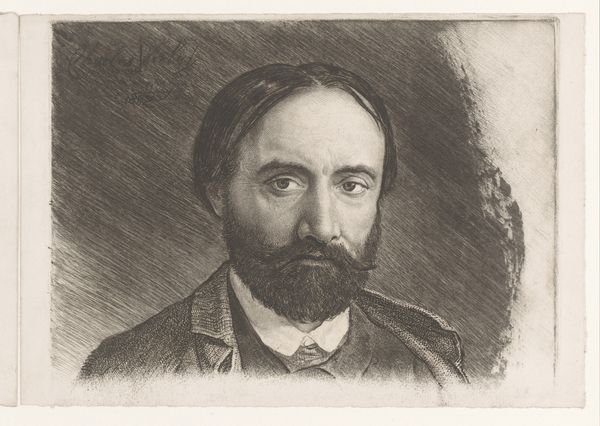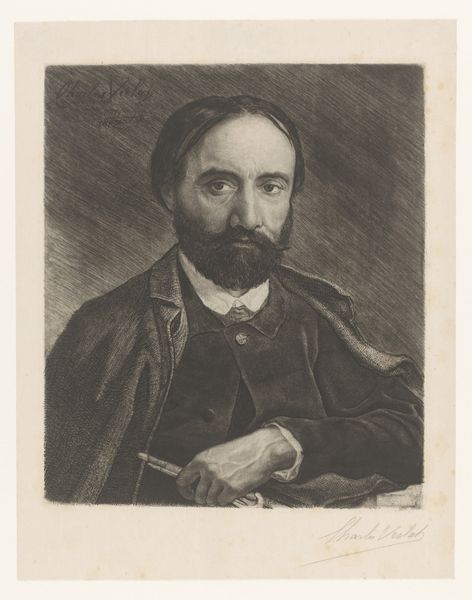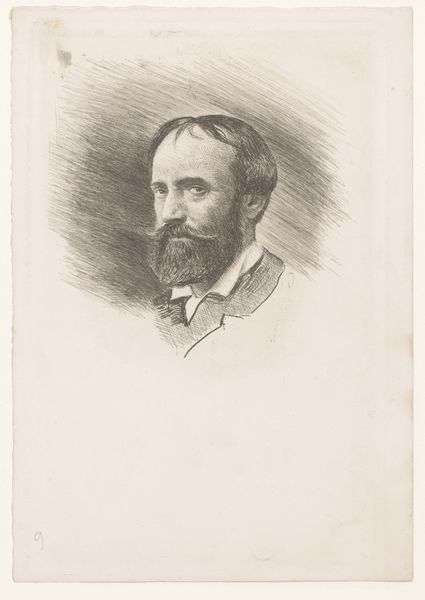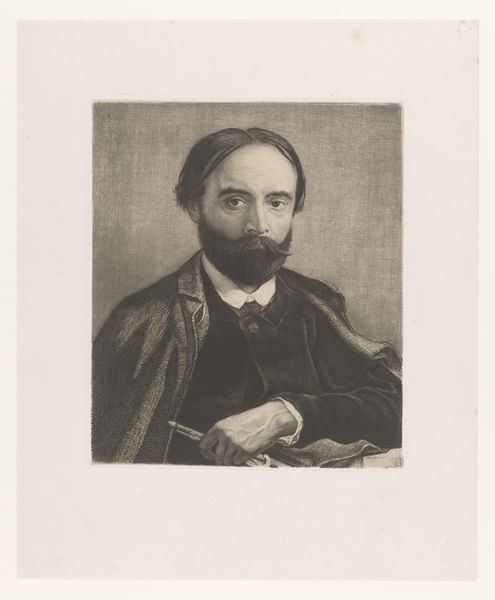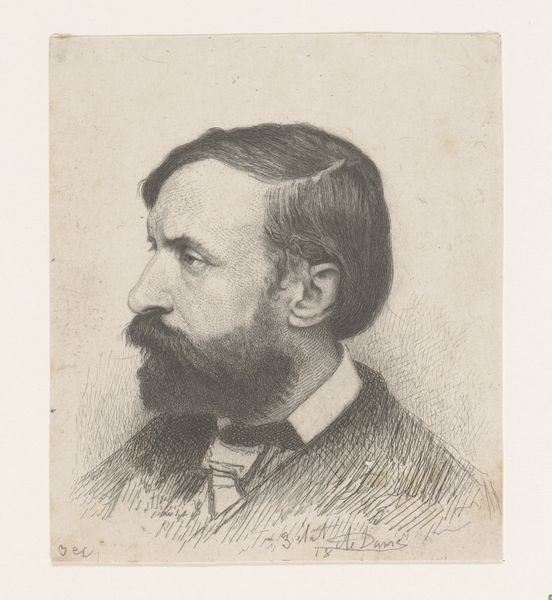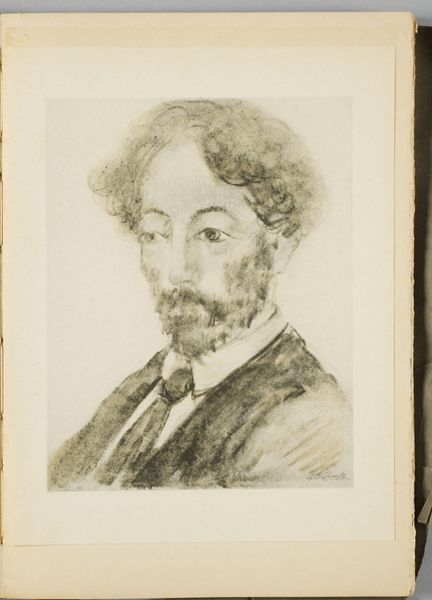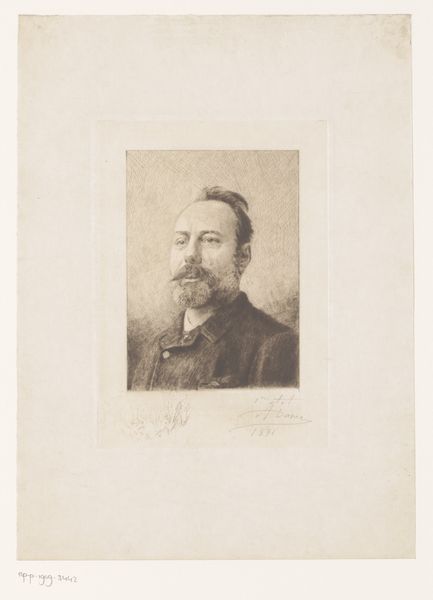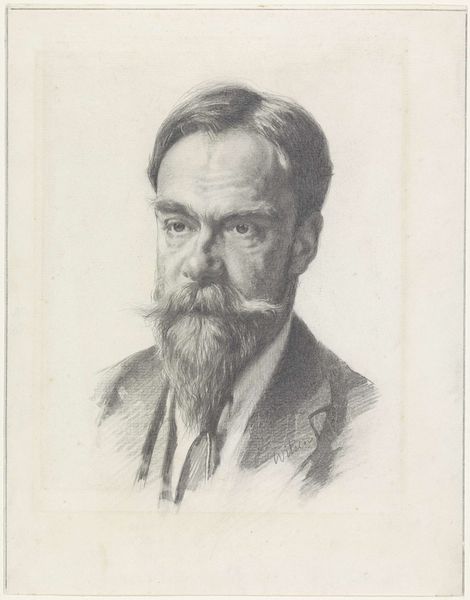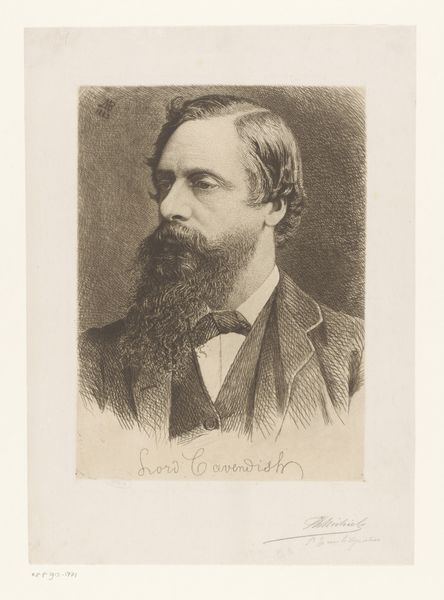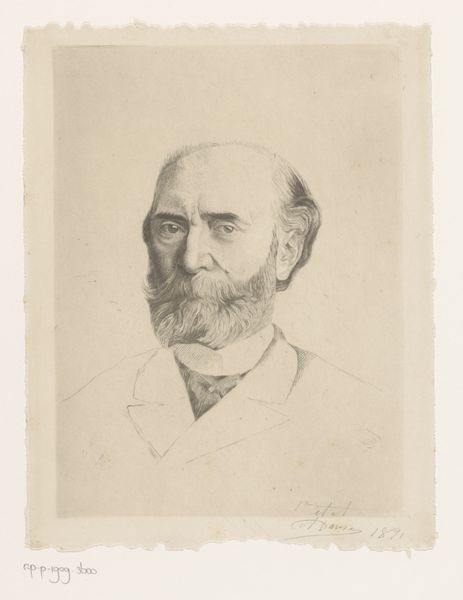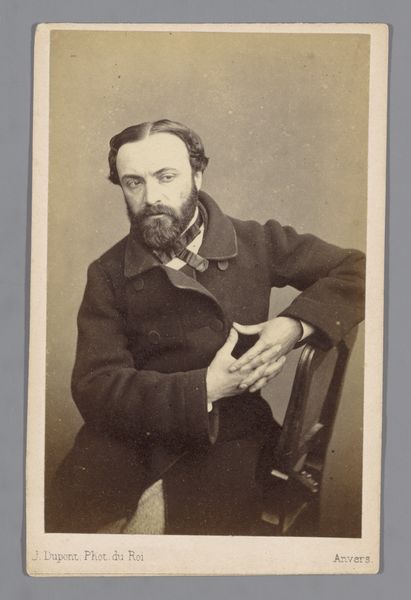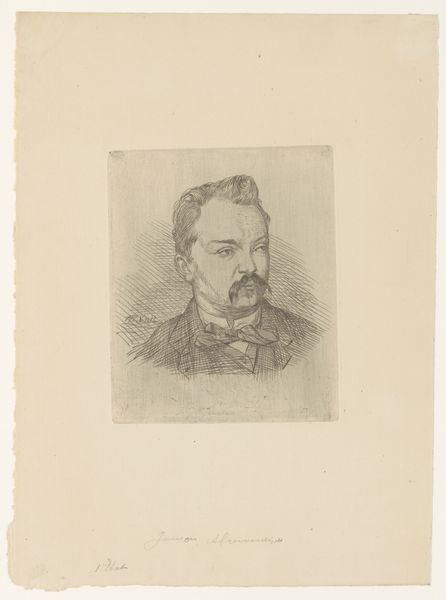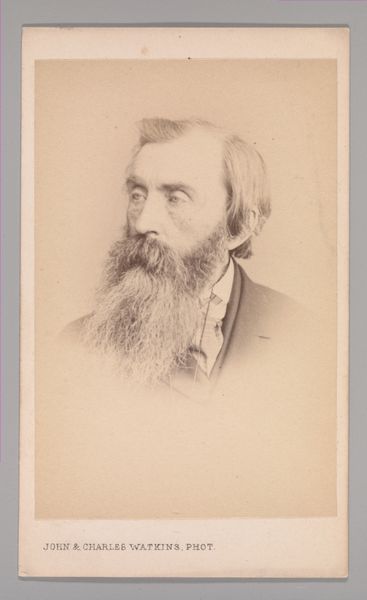
drawing, graphite, charcoal
#
portrait
#
drawing
#
self-portrait
#
charcoal drawing
#
pencil drawing
#
graphite
#
charcoal
Dimensions: height 192 mm, width 248 mm
Copyright: Rijks Museum: Open Domain
Charles Verlat created this self-portrait using etching, a printmaking technique with a long and rich history. The process begins with a metal plate, usually copper or zinc, coated with a waxy, acid-resistant ground. The artist then scratches an image into the ground, exposing the metal beneath. When the plate is immersed in acid, the exposed lines are etched, creating grooves in the surface. Ink is then applied to the plate, filling these grooves, and the surface is wiped clean. Finally, the plate is pressed onto paper, transferring the ink and creating the print. In this self-portrait, Verlat masterfully manipulates the etching process to capture the nuances of light and shadow, the texture of his beard, and the intensity of his gaze. The dense network of lines creates a sense of depth and volume, while the rough, unfinished areas add a sense of immediacy and spontaneity. Considered in the context of 19th-century printmaking, this portrait demonstrates the democratic potential of the medium. Unlike painting, which was often reserved for the wealthy elite, etching allowed artists to create multiples of their work, making art more accessible to a wider audience. This challenges traditional hierarchies between fine art and craft, highlighting the value of skilled labor and accessible art forms.
Comments
No comments
Be the first to comment and join the conversation on the ultimate creative platform.
